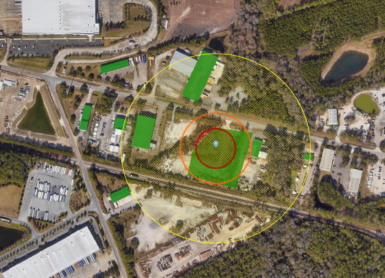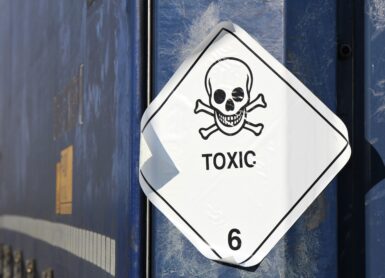
Imagine that there is a kerosene refuelling station at an airport and upon the full-bore rupture of one of the loading hoses, kerosene is accidentally released as a liquid forming a spreading liquid spill. If there is a nearby ignition source, the liquid spill will ignite creating a pool fire. Another situation is, that there is a warehouse storing a series of combustible solid materials that upon the presence of a spark, start burning freely leading to a warehouse fire. These two examples of accidental scenarios lead to the generation of hot smoke plumes that will rise into the atmosphere and transport along with a series of toxic combustion products that can be harmful to both humans and the environment.
Both pool and warehouse fires merely consist of a combustion reaction where the fuel burns in oxygen. Many of the fuels used in the chemical industry are organic hydrocarbons which frequently contain contaminants such as heavy metals and sulfur compounds that can result in air pollution when burned. The exposure and inhalation of, for instance, soot, can lead to lung cancer and asthma, whereas exposure to CO2 can produce asphyxia.

That is the reason why there is nowadays a growing interest in simulating the effects of rising smoke plumes. The assessment of the toxic concentration levels of these combustion products transported along the trajectory of the plume is of utmost importance so that safety professionals can use this information in advance for hazard identification, safety analysis, and emergency planning.
Analysing smoke plume hazards with EFFECTS
This is the reason why Gexcon has developed a “plume rise model” (which is implemented in Gexcon’s consequence modelling software EFFECTS), that not only calculates the trajectory of the plume and the hazard distances to specific concentration threshold levels, but also the potential penetration or reflection of the mixing layer height.

The importance of the plume penetration is that all mass that has risen above the mixing layer, will never disperse back below the mixing layer. Therefore, toxic combustion products will be trapped above the mixing layer height and will never create chemical exposure at ground level. The reason for this is that at the boundary of the mixing layer (at the temperature inversion height) there is no vertical turbulence. Only the stronger chimney emissions are likely to penetrate upwards due to their greater buoyancy forces. Apart from the penetration of the mixing layer height, the potential reflection of the plume should also be considered, which especially plays a role for plumes that remain below the mixing layer height. The figure below shows a graphical representation of the penetration and reflection phenomena in smoke plumes.

The consideration of the penetration and reflection phenomena is highly relevant when assessing the consequences of a potentially toxic smoke plume. For instance, if the fire brigade is trying to extinguish the fire, that would significantly decrease the heat produced by the fire, leading to a less buoyant smoke plume that might not have enough momentum to penetrate the mixing layer height. Hence, the plume will be trapped below the mixing layer height. That means that trying to extinguish the fire would lead to more danger of toxic exposure at ground level. Of course, other factors should also be taken into consideration such as potential escalation to a bigger and prolonged fire.


If you want to know more about how to use the plume rise model in EFFECTS to perform simulations to predict the behaviour of smoke plumes due to pool or warehouses fires, watch the video below.
We understand that sometimes it’s important to try the software before you purchase it.
You can download a free viewing version of EFFECTS to view already-calculated projects. Click the button below to download the software’s free viewing demo.



